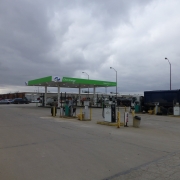Metropolitan Energy Center (MEC) and Kansas City Regional Clean Cities Coalition are proud to announce a clean transportation double feature on August 2nd and 3rd at Wilson’s Creek National Battlefield just south of Springfield, Mo. Along with our host and partners from the National Park Service, MEC will be celebrating the official roll-out of the park’s new green equipment and vehicle fleet. And, along with local sponsors, supporters and fans of green-tech cars, we’ll be there to cheer on entrants from 25 different worldwide universities in the American Solar Challenge, an event that is traveling 1,975 miles through nine parks and six states this year, running solely on sunlight. Visitors will be able to see the solar cars up close at Republic High School, 4370 Repmo Drive, Republic, MO, 65738 on Tuesday, August 2, between about 4:00 and 8:00 pm. Team members will be happy to answer your questions, and all kinds of information and activities will be available – even solar-powered s’mores. On Wednesday, August 3, the public is invited to visit the Battlefield where the cars charge up, and then take off for their next destination between 8:00 and 10:00 am.
MEC’s fleet-greening efforts will save fuel, cut emissions and clean the air at Wilson’s Creek for years to come. Thanks to the Clean Cities National Parks Initiative (CCNPI), four diesel and gasoline mowers have already been replaced by propane models, and a new plug-in hybrid car will replace a conventional hybrid vehicle for park staff. Funding from CCNPI helps limit petroleum consumption, cut greenhouse gas emissions and enhance the sustainability of park fleets. CCNPI began in 2010 with three projects nationwide. Five years later, more than 30 parks, monuments and historic sites around America have participated, in the process cutting climate impacts and cleaning the air for everyone. Wilson’s Creek is the 2nd park to participate in Kansas or Missouri, after Nicodemus National Historic Site in 2014.
In this year’s centennial celebration of the Park Service, it’s hard to think of a better way to celebrate than helping deploy technologies and fuels that can help protect America’s national treasures for another hundred years. For additional details on the American Solar Challenge’s visit to Wilson’s Creek, visit NPS . For more information about the CCNPI, visit the U.S. Department of Energy’s Clean Cities website.

